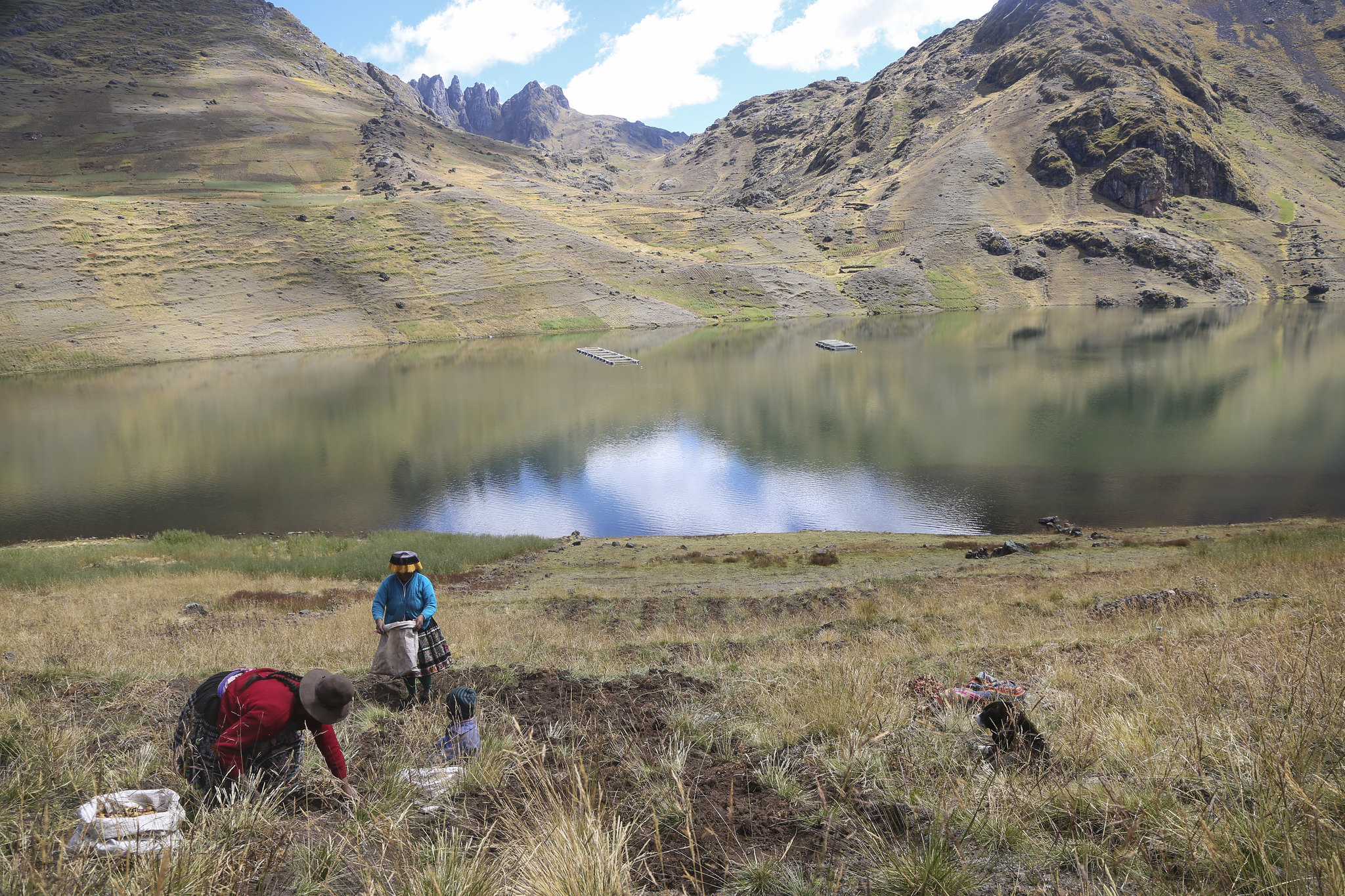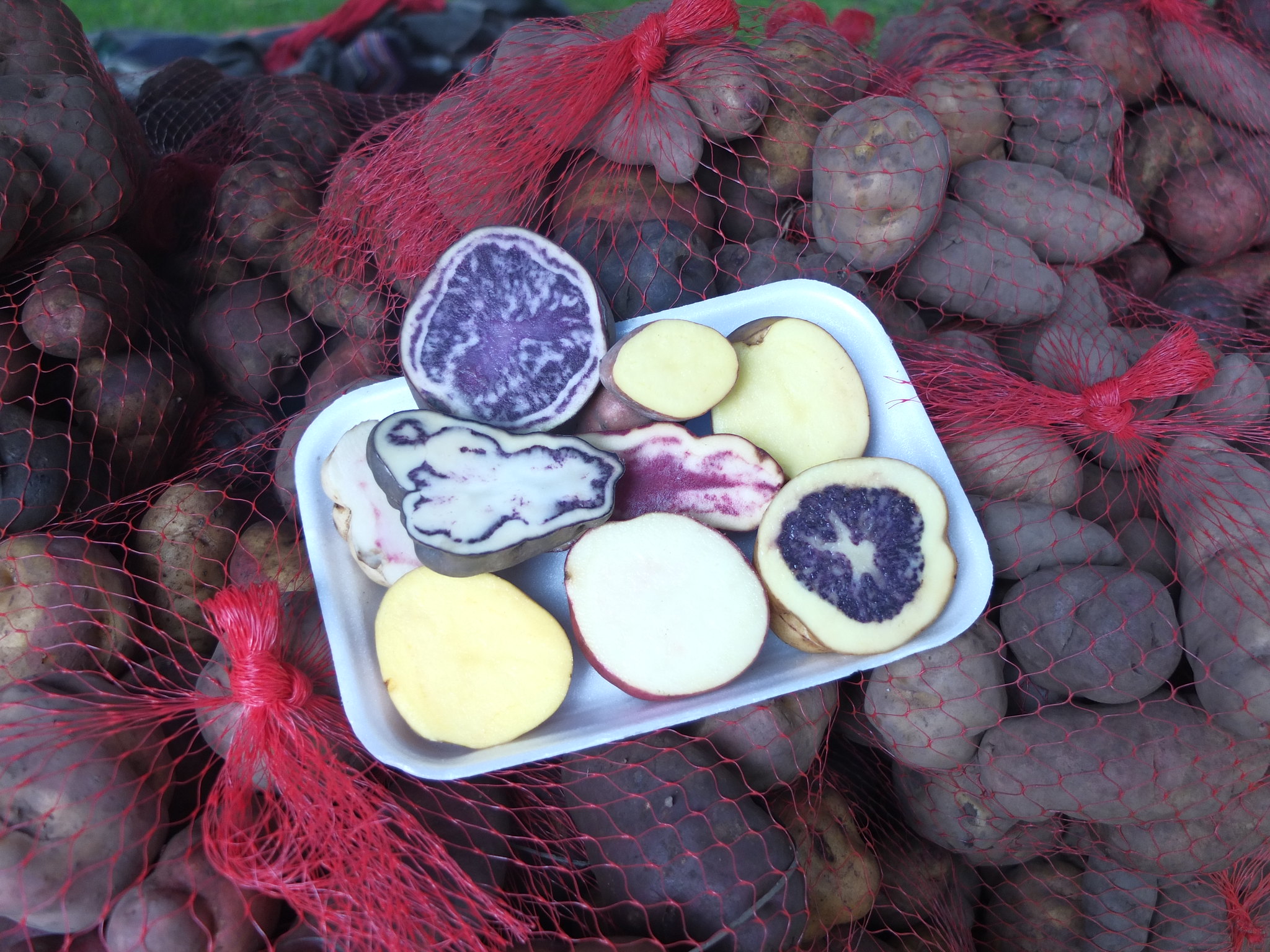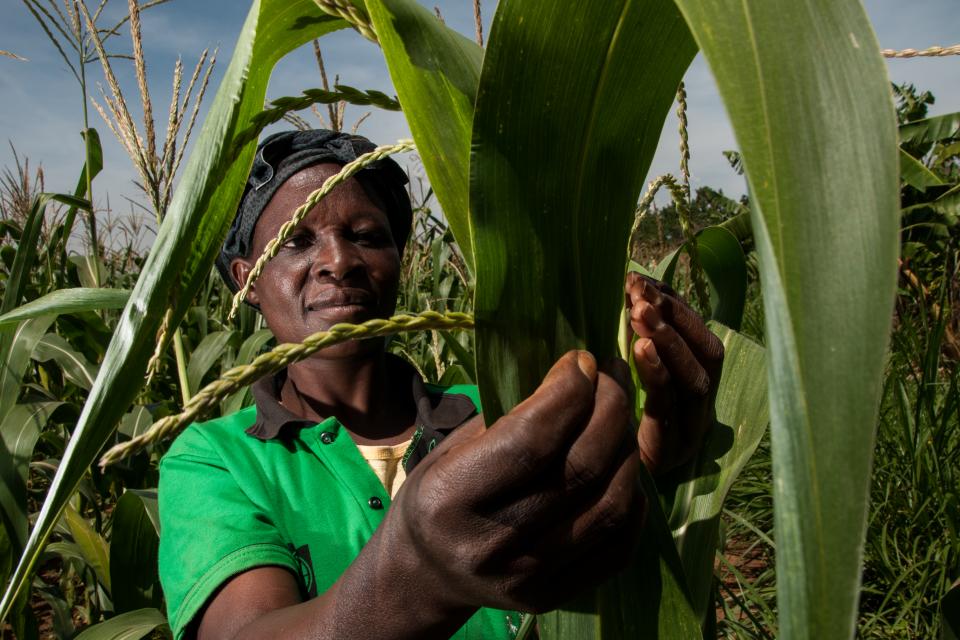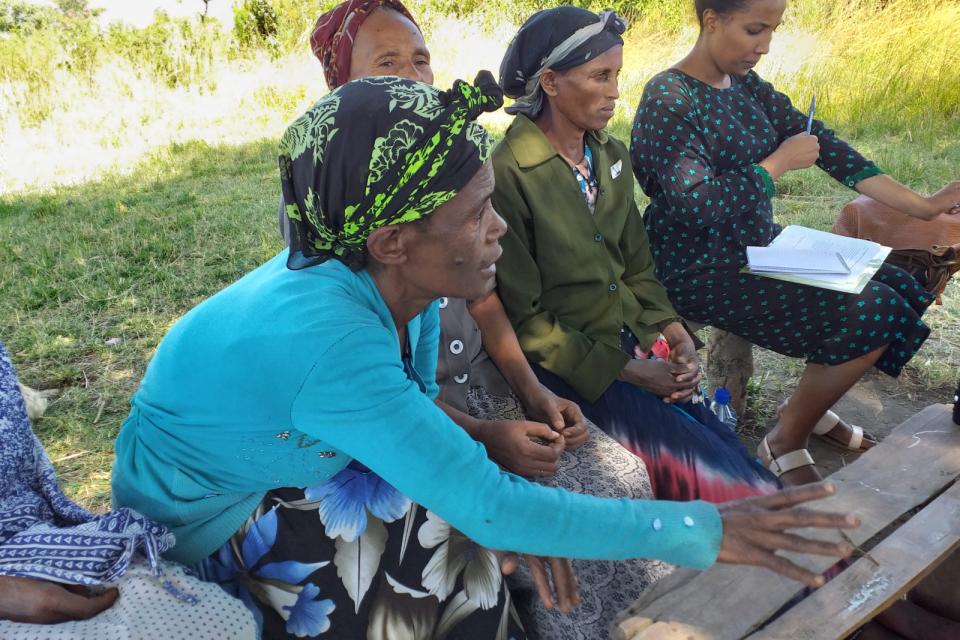Women hold the seeds of a stronger food system for Peru / Las mujeres alimentarán nuestro futuro

An abbreviated version of this op-ed was first published by El Comercio in Peru on March 16, 2021.
Versión en español a continuación.
The extremes of climate change and now COVID-19 have put Andean farmers at the sharpest end of the food system, and none more so than women, who already perform much of the family farm work.
As the gatekeepers to family nutrition and the guardians of crop diversity, women play a defining yet underappreciated role in Peru’s food system. So, at every stage of the food chain there are untapped opportunities to achieve greater food security by better serving women through research and innovation.
Take the quality of seed for staple crops like potato in Peru, for example. Already a nutrient-dense crop, new varieties that are more productive and provide even greater nutritional returns are only as successful as their uptake among women, meaning women’s involvement from the very start is critical.

During potato harvest season in the Potato Park in Cuzco, Peru, the mountains are dotted with farmers cultivating potatoes in every hue found in the rainbow. Photo: Sara A. Fajardo/CIP.
Farmers living in the furthest reaches of the Andes, where resources are scarce and conditions are challenging, are likely to opt for crops that are not necessarily the most profitable or productive but which can best withstand the harsh environmental challenges they face.
While men tend to choose to plant hardy crops that secure their yields, women’s preferences are more often shaped by varieties that are easier to grow, quick to cook, nutritious and palatable.
To be successful, new varieties of potato must be developed to cater for all. For example, pregnant women, new mothers and women at reproductive age, have particular nutritional needs and are more likely to suffer from diet-related conditions like anaemia. More than one in five women of childbearing age in the rural Peruvian Andes suffer from iron and zinc deficiency.
One solution to meeting this nutritional need is developing a potato biofortified with iron. New, improved varieties of staple crops can help meet not only nutritional requirements, but also women’s preferences and caregiving needs as well. For example, new varieties that are quicker to cook reduce the burden on women for gathering fuelwood for cooking.
For women’s specific needs and preferences to be met, women must be involved at the beginning of the process to design, develop and scale new varieties and other productive technologies.
To better involve women in this process, researchers need to better understand and navigate gender-specific constraints that might hold back their participation in agricultural development. For example, women are likely to have had less access to education, which may limit their participation in a Spanish-speaking market, a language that men typically learn at school.
Researchers must adopt a deliberate approach to engage with both women and men to understand how their preferences are shaped by gender, culture and context, and what this means for developing new crop varieties, which might mean using indigenous languages to better communicate with women, for example.
Finally, women are a tremendous asset not only in informing new crop varieties but in breeding them and introducing them to the field.

Potato varieties native to the Andes region. Photo: V. Durroux/CIP.
If agricultural scientists are to best serve women smallholders, they must also include women in the research and development process. Such visibility will help build trust, encouraging women to take up new varieties developed to meet their needs and priorities.
The voices of women in agricultural development are as important to food security as women’s votes are to democracy. Women account for about half of the world’s smallholder farmers, contributing almost half of agricultural labour and deserving a more representative sector.
This is why the CGIAR GENDER Platform is collating, improving and sharing the tools and approaches needed to make sure that both women and men farmers are equally involved in efforts to breed new varieties, develop new technologies and strengthen the food system, not only in the Andes but across the globe.
The challenges facing farmers and rural families in the Andes and beyond are only likely to grow, making it more important than ever that we use the full combined potential of women and men to transform food systems.
Las mujeres alimentarán nuestro futuro
Los extremos del cambio climático y ahora el COVID-19 han colocado a los agricultores andinos–especialmente a las mujeres, que ya realizan gran parte del trabajo agrícola familiar–en el punto más extremo del sistema alimentario.
Como guardianas de la nutrición familiar y de la diversidad de los cultivos, las mujeres desempeñan un papel decisivo, aunque poco apreciado, en dicha estructura. Por lo tanto, en cada etapa de la cadena alimenticia hay oportunidades sin explotar para lograr una mayor seguridad alimentaria, atendiéndolas mejor a través de la investigación y la innovación.
Tomemos como ejemplo la calidad de las semillas de cultivos básicos como la papa en Perú. Si bien estas son ricas en nutrientes, las nuevas variedades son más productivas y proporcionan un mayor rendimiento nutricional. Pero su éxito depende de su aceptación por parte de las mujeres, lo que significa que su participación desde el principio es fundamental.
Los agricultores que viven en las zonas más alejadas de los Andes suelen optar por plantíos que no son necesariamente los más rentables o productivos, pero que pueden resistir mejor los duros desafíos medioambientales a los que se enfrentan.
Mientras que los hombres tienden a elegir cultivos resistentes que aseguren sus rendimientos, las preferencias de las mujeres se decantan por variedades más fáciles de sembrar, rápidas de cocinar, nutritivas y apetecibles.
Para tener éxito, las nuevas variaciones de papa deben ser desarrolladas para responder a las diversas demandas. Por ejemplo, las mujeres embarazadas, las que acaban de dar a luz y las que están en edad reproductiva tienen necesidades nutricionales especiales y son más propensas a sufrir enfermedades relacionadas con la dieta, como la anemia. Más de una de cada cinco en edad fértil en zonas rurales de los Andes peruanos sufre deficiencia de hierro y zinc.
Una solución para satisfacer este requisito nutricional es desarrollar una papa biofortificada con hierro. Además, estas pueden ayudar a saciar las preferencias de las mujeres y las exigencias de cuidado. Por ejemplo, las nuevas variedades, que son más rápidas de cocinar, reducen la carga de las mujeres para recoger leña.
Pero, para que esto suceda, ellas deben participar desde el principio del proceso de diseño y difusión de nuevas variedades y otras tecnologías productivas. Por tal motivo, los investigadores tienen que entender mejor y analizar las limitaciones específicas de género que puedan frenar su colaboración en el desarrollo agrícola. Esta visibilidad contribuirá a generar confianza, motivando a las mujeres a adoptar los recientes avances para satisfacer sus necesidades y prioridades.
Por último, las mujeres son un activo enorme no solo para informar el desarrollo de nuevas variedades de cultivos, sino también para su mejoramiento e introducción en el campo. Su presencia en el progreso agrícola es tan importante para la seguridad alimentaria como el voto femenino para la democracia. Las mujeres representan alrededor de la mitad de los pequeños agricultores del mundo, contribuyendo con casi la mitad del trabajo y merecen, por tanto, más representación en el sector.
Por ello, la Plataforma GENDER del CGIAR está recopilando, mejorando y compartiendo herramientas y enfoques necesarios para garantizar que tanto mujeres como hombres agricultores participen por igual en los esfuerzos de mejoramiento de nuevas variedades, desarrollo de nuevas tecnologías y fortalecimiento del sistema alimentario, no solo en los Andes sino en todo el mundo.
Los retos a los que se enfrentan los agricultores y las familias rurales no harán más que aumentar, por lo que es más importante que nunca que utilicemos todo el potencial combinado de mujeres y hombres para transformar los sistemas alimentarios.


